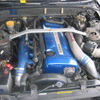Uas 300Zx Vs. Standard 300Zx Aero Analysis And Results
Announcements
-
Similar Content
-
Latest Posts
-
hey OP can you remind me what the actual question was, I got sidetracked at V12. Do you have an turbo oil return leak and an unidentified coolant leak? The factory oil returns are terrible design; short, rubber and expensive to replace. They are very common to fail and a pain to replace because they are so short. Still, they are available new if you want to replace both last time I checked. For the coolant leak, any competent mechanic should be able to do a pressure test; that should show up where the leak is. It is almost certainly one of the billion 30 year old rubber lines which are now brittle as hell, you engine will be fine.
-
From the OP's description, sounds to me like the TCU is in 'limp home' mode --- that is, no actuation power to shift solenoids, and the EPC valve is shut (full line pressure). This effectively sticks the box in 3rd gear, with as much line pressure as possible, to try hold the high clutch clamped shut....and so you get woeful acceleration and don't feel any shifts (because they're not happening). If you don't have Consult or some other scanner to interrogate the TCU itself, you can test with a multimeter to see if it's in limp home mode....ie; stick it in D with engine at idle (hold vehicle with hand/foot brake), and measure the voltage at the TCU feeding shift solenoids A & B -- both should be ON (battery voltage). If they are energized at the TCU, you can unplug the harness from the TCU, and check resistance down through the wiring to the solenoids themselves -- you should see about 20ohms on each coil --- if you do, you can presume the wiring to shift solenoids is OK -- if both measure open circuit, you have to check intermediate connectors in the loom down to the gearbox (and the gearbox connector itself), and check the shift solenoid resistance at the gearbox connector itself --- if the shift solenoids test open circuit here, problem is in the box (ether the solenoids or wiring to them is bad). If you get no voltage at TCU connector for the shift solenoids (and the solenoids/wiring test OK), check powers/grounds to the TCU itself --- if they're ok, it suggests the TCU is the culprit (and you'd need to interrogate it if possible, to find out why it's behaving badly)...
-
Hey mate give Autotechnica a go, I recently got some Comfort PUs and rails from them, they're comfy and look great highly recommended! https://www.autotecnica.com.au/part-finder/nissan/skyline/r32/
-
By joshuaho96 · Posted
Honestly, for a daily I would gladly rock a Camry. The more disposable the better. People drive horribly out here and road conditions are awful. -
By joshuaho96 · Posted
Verify it's going into each of the 4 gears in normal acceleration, make sure the torque converter locks up over ~65-70 kph or so at low throttle opening. If you ease into the throttle at those speeds eventually you should get a "gear" between 3rd unlocked and 4th locked. It should downshift eventually if you floor it at 65 kph too. Get some Matic D ATF and drain the pan, check for signs of sadness in fluid and drain plug magnet. Top off to the correct level afterwards. If the transmission is worth saving you can drop the pan on a second drain and change the filter while you're at it. These are not complicated transmissions, at least compared to modern stuff.
-





Recommended Posts
Create an account or sign in to comment
You need to be a member in order to leave a comment
Create an account
Sign up for a new account in our community. It's easy!
Register a new accountSign in
Already have an account? Sign in here.
Sign In Now